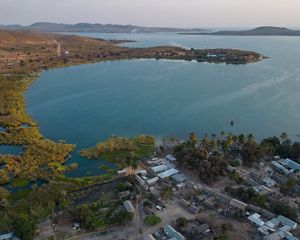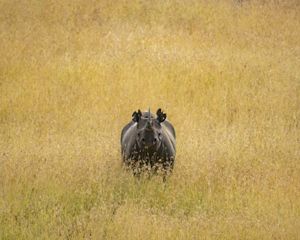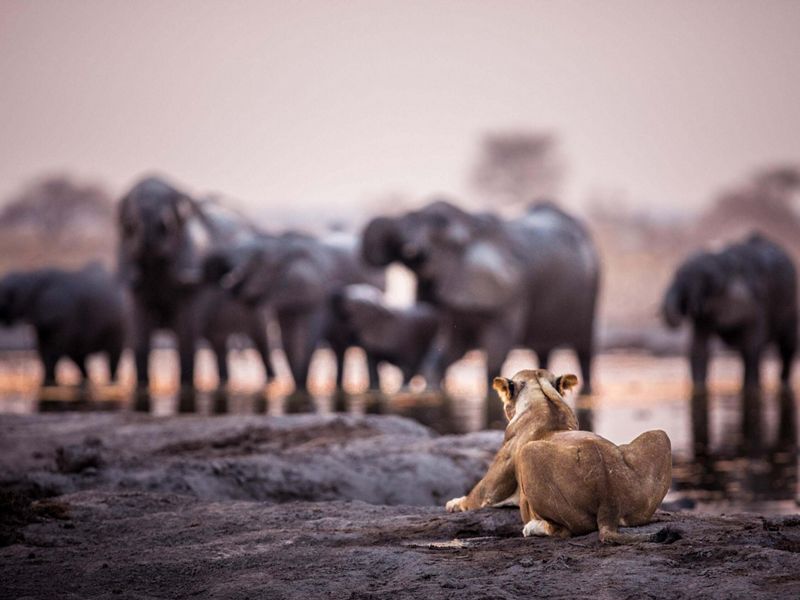
The watering hole Elephants and a lion gather around a watering hole in Botswana. © David Heucke/TNC Photo Contest 2023
Africa is known for its incredible biodiversity. From the desert to the wide-open plains, the forested cliffs to the coral reefs, the continent is rich in plant and animal species found nowhere else on the planet.
Some of these unique life forms evolved here in Africa, meaning they are “endemic.” Some have diversified into a multitude of species, varying in size and color, and each filling a role in the ecosystem that has an impact on other species.
Not all of the species in this list are endemic, but they all form the complex web of life that defines biodiversity in Africa. Explore this list to discover something new, and learn about what’s at stake in the midst of the biodiversity crisis.
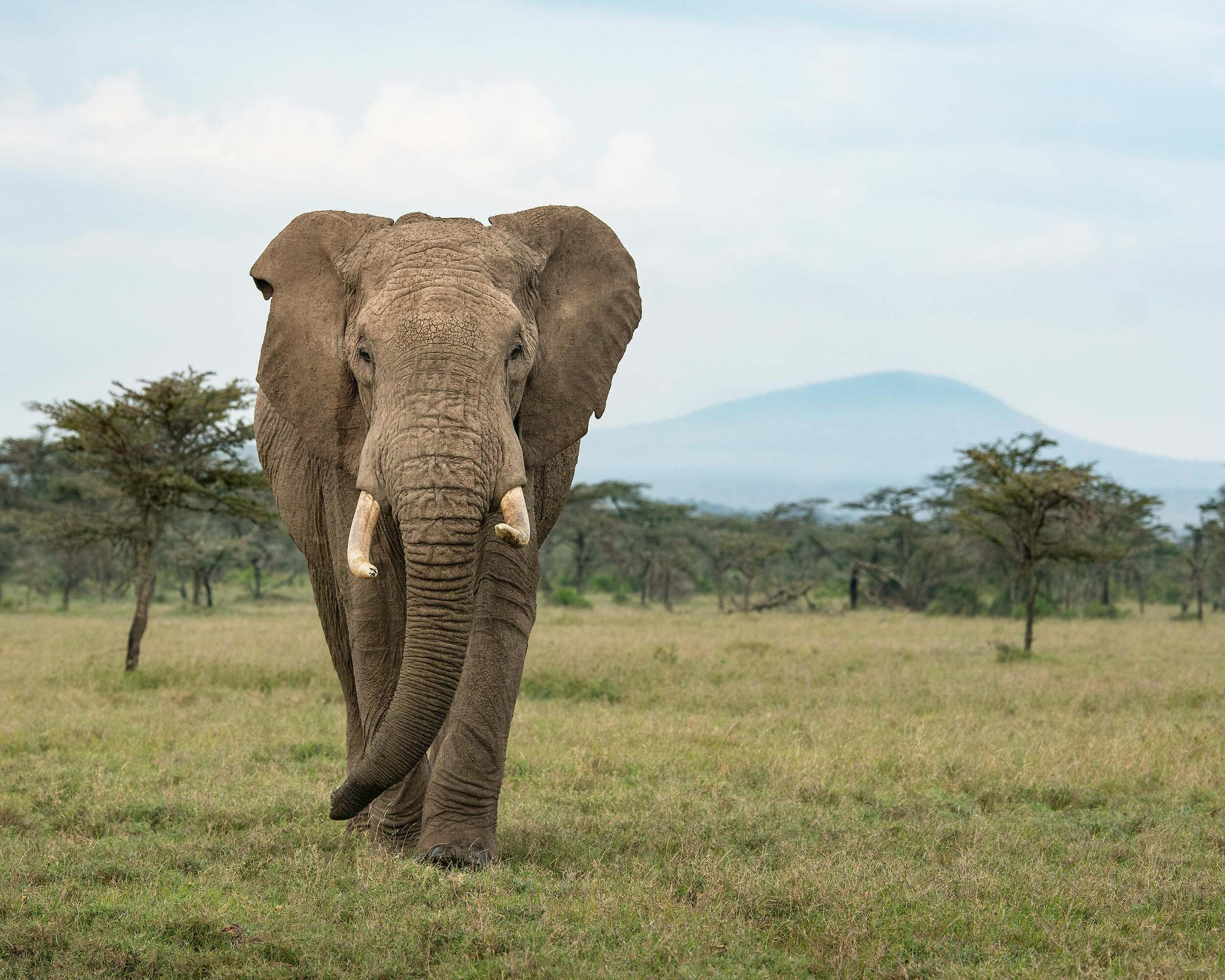
African Bush Elephant
One of the most iconic African species, of course, is the African Bush Elephant. They are found in most countries in sub-Saharan Africa, ranging from the open savanna to the desert. Females live together in a matriarchal herd with their young, while males live in solitude, approaching a herd of females only to mate.
The Nature Conservancy is helping to protect African elephants in several ways. One example is our work in Tanzania to reduce human-elephant conflict. We supported the creation of an alarm system that warns villagers when an elephant is near and may cause damage to their crops. Villagers then use non-lethal tactics, like shining bright lights, throwing chili powder or even shooting off fireworks to scare the animal away. This helps farmers protect their livelihoods and keeps these elephants from being killed.
Fun fact: African bush elephants live up to 70 years—longer than any other mammal except humans.
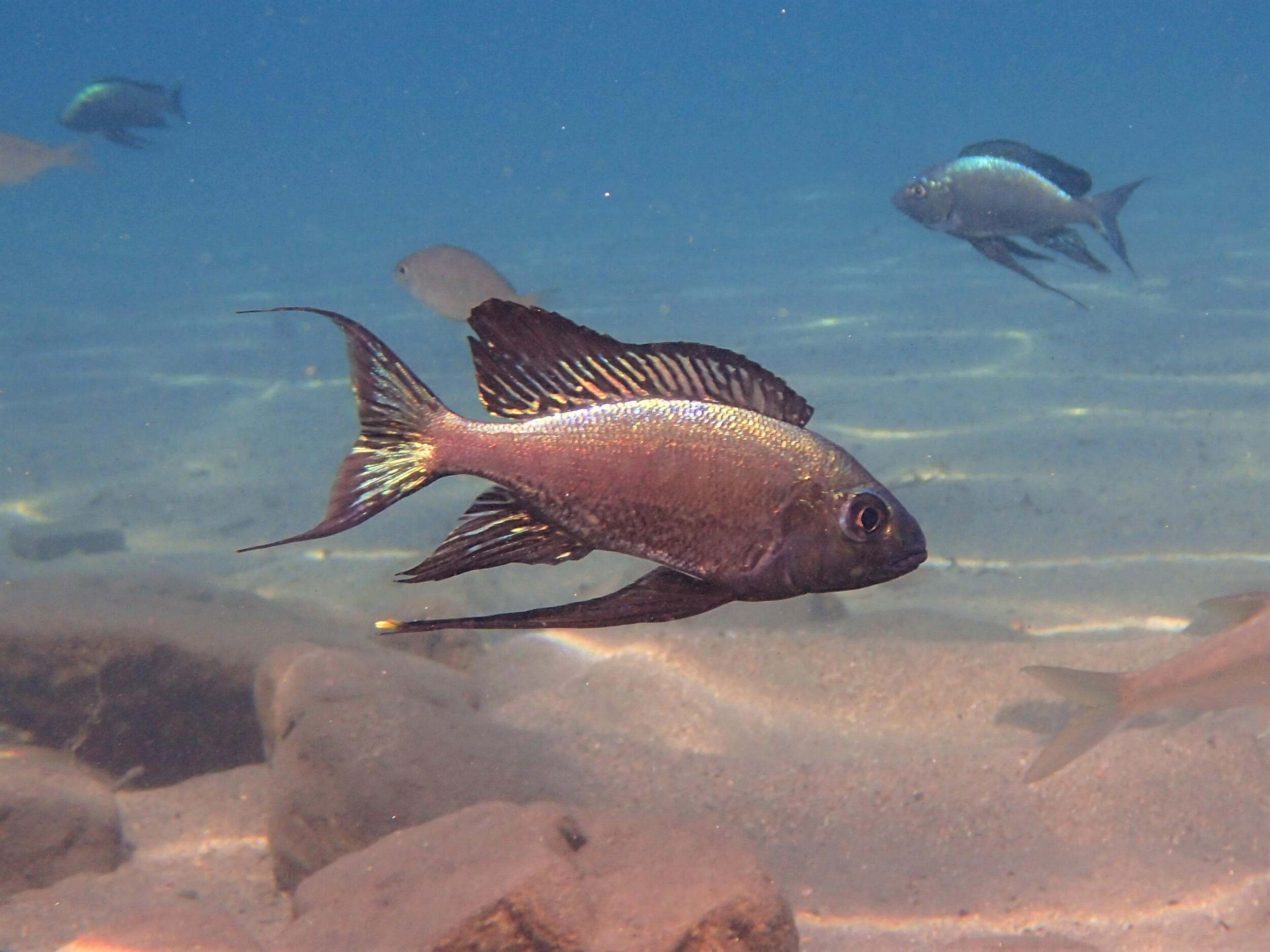
Cichlid
Lake Tanganyika, the long, deep lake nestled between Burundi, the Democratic Republic of the Congo, Tanzania and Zambia has more genus-level aquatic diversity than any other lake in the world. We’re not talking about species-level diversity—we’re talking genus-level!
That designation is largely thanks to fish in the cichlid family. About 250 species of cichlids are found only in this African lake. Over the last 10 million years, these have diverged into so many different shapes and colors that they warrant their own genus. Cichlids are also incredibly vulnerable. These fish have the largest number of endangered species among all freshwater fish. That’s one reason why TNC and our partners have worked together to map key biodiversity areas in the lake that will help define new protected areas and direct economic activities away from these sensitive sites.
Fun fact: Some cichlid species are mouth-brooders. The female fish carries her fertilized eggs in her mouth to protect them!
We Can’t Save Nature Without You
Sign up to receive monthly conservation news and updates from Africa.

Dung Beetle
Dung beetles play the essential role of cleaning up—you guessed it—dung. These small but incredibly strong insects clean up droppings from other animals by forming balls of feces and rolling them away. They bury the ball next to their eggs. When the young dung beetles hatch, they feed on the dung ball, recycling nutrients from the waste back into the environment. Dung beetles are vulnerable to habitat loss, pesticides and climate change.
Fun fact: The ancient Egyptian god of the sun was symbolized by a dung beetle. They believed this god rolled the sun across the sky during the day and buried it each night.
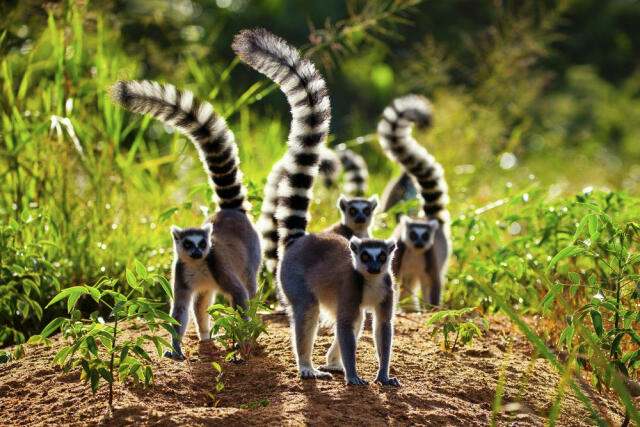
Lemur
Lemurs are endemic to Madagascar and consist of more than 100 distinct species. Lemurs evolved separately from other primates and are only found on the island. They play a key role in the island’s ecosystem by helping pollinate plants and spreading tree seeds through their droppings.
Nearly all lemur species are endangered and nearly one-third are critically endangered, just a step away from extinction, according to the International Union for Conservation of Nature.
Fun fact: The smallest lemur species weighs just 30 grams, just over one ounce, and the largest weighs 9 kilograms, nearly 20 pounds!
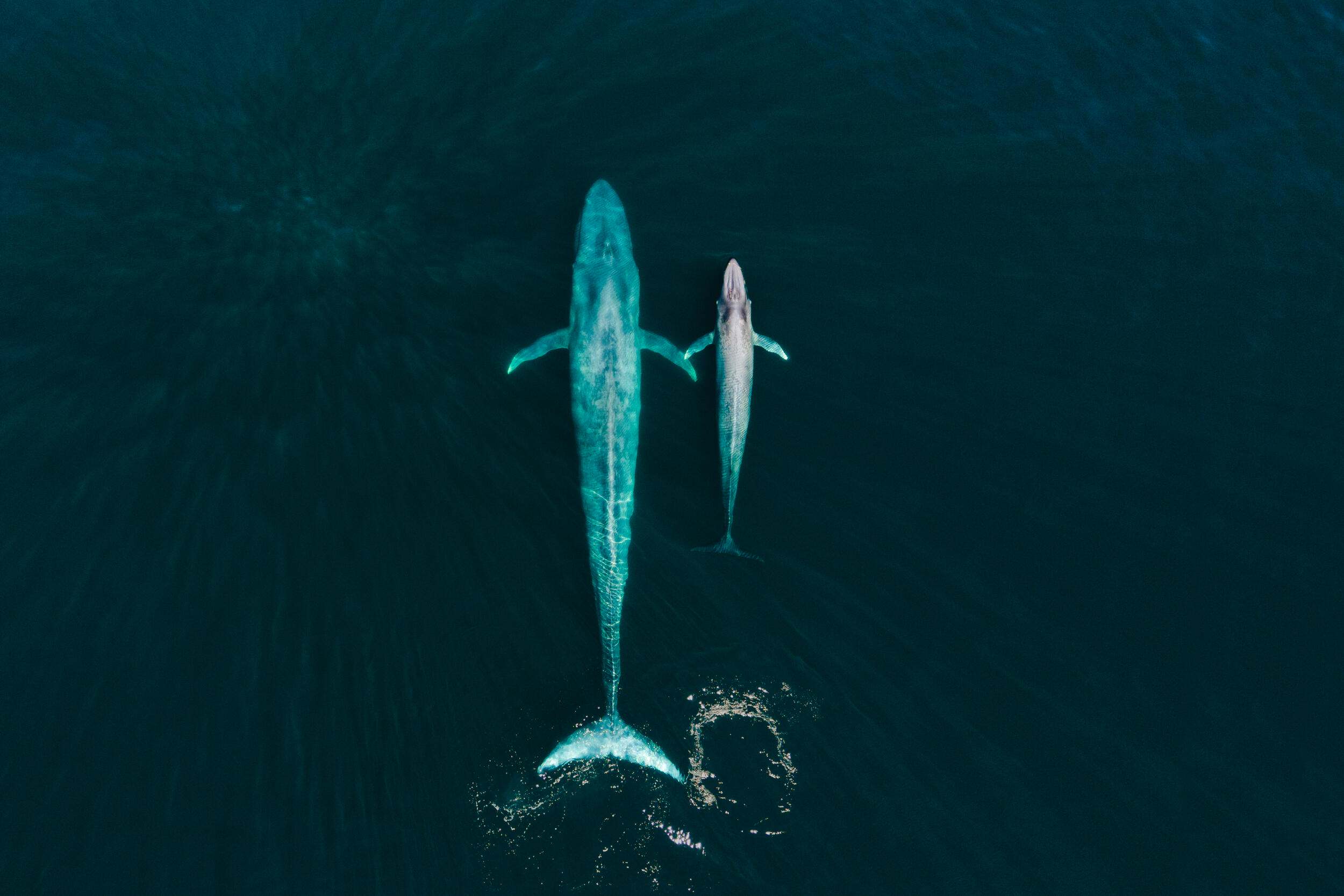
Blue whale
Blue whales live in oceans around the world, but are elusive and rare. They nearly went extinct during the era of commercial whaling. Today, their population is estimated between 5,000 and 15,000, and they have recently been spotted in the waters around Seychelles for the first time in decades. This is significant, because Seychelles was a hotspot for whaling in the mid-20th century.
As part of a ground-breaking debt conversion deal co-designed by The Nature Conservancy, Seychelles committed to increasing its marine protection from just 0.04 percent of its Exclusive Economic Zone to a full 30 percent, which it achieved in 2020. Now, 410,000 square kilometers (158,000 square miles)—an area larger than Germany—is significantly safeguarded to encourage sustainable development, adapt to the effects of climate change and provide habitat to animals like the blue whale.
Fun fact: Blue whales can reach 30 meters (98 feet) long. That’s longer than a basketball court!
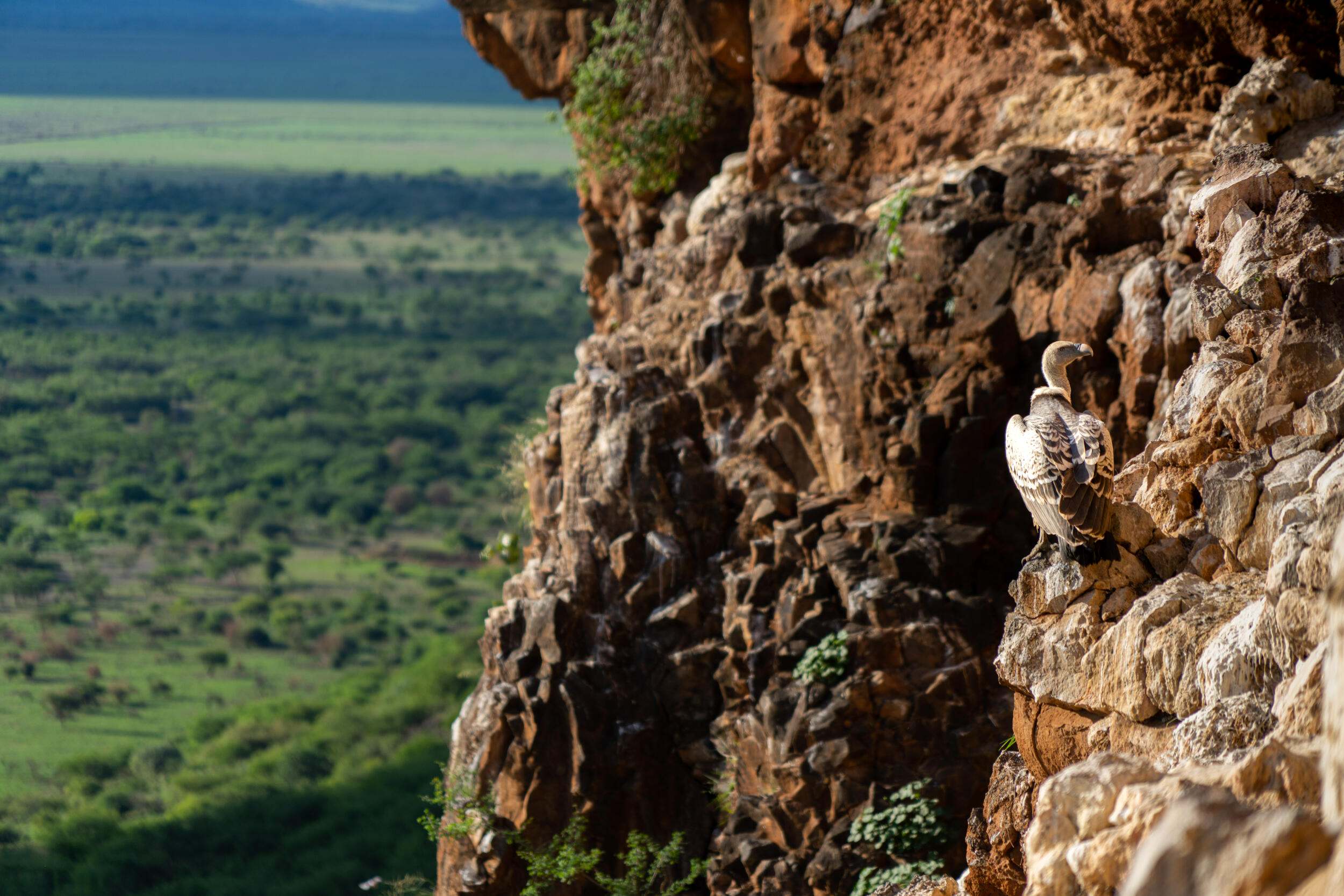
Vultures
The Ruppell’s vulture is one of 11 species of vultures in Africa and one of four species that are critically endangered. Some of the last Ruppell’s vultures remaining in Africa live in Kenya’s Great Rift Valley, where the wind is constant. This gives these big, heavy birds a nice lift in their wings. But the excellent wind makes the valley a great location for wind power, too. Kenya’s second-largest wind farm is located here, and its enormous spinning turbines put vultures at risk of collision. TNC and partners helped the wind farm create a sustainable funding stream to pay for activities that would minimize the risk of collision and support the local vulture population in other ways. For example, bird observers keep their eyes on the sky all day long. If a bird comes within a kilometer of the turbines, technicians can quickly halt the blades until the bird has passed.
Fun fact: Vultures can fly at a speed of 50 kilometers per hour.
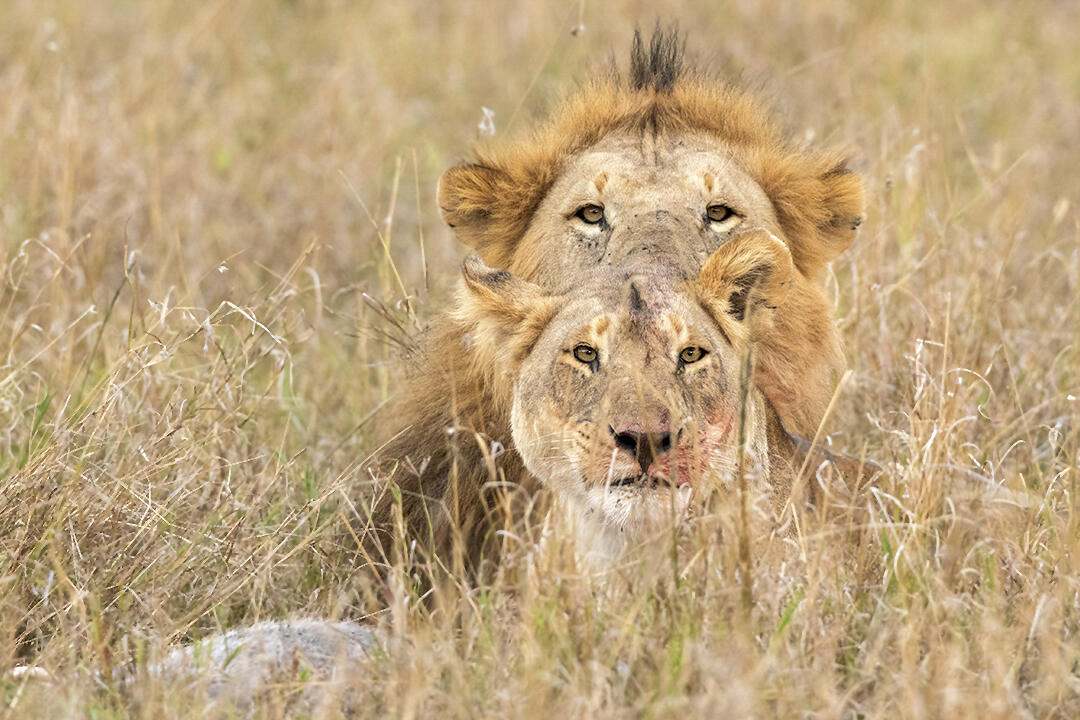
Lion
This list would not be complete without the lion. This iconic African big cat is a highly social animal. They live in groups, or “prides,” which consist of several females, their cubs and one or more male lions who protect the pride. The females are the primary hunters and can work together to take down large prey like rhinos and giraffes.
Lion populations have declined dramatically in recent decades. One of the main causes is human-wildlife conflict that increases as lion habitat decreases in size due to human encroachment, resulting in an increase in encounters with livestock. TNC is supporting partners who have come up with high tech ways to prevent livestock attacks before they happen. One way is by collaring certain lions and alerting pastoralists when they approach settlements.
Fun fact: Lions can eat 40 kilograms (88 pounds) of meat at a time, about a quarter of their body weight!
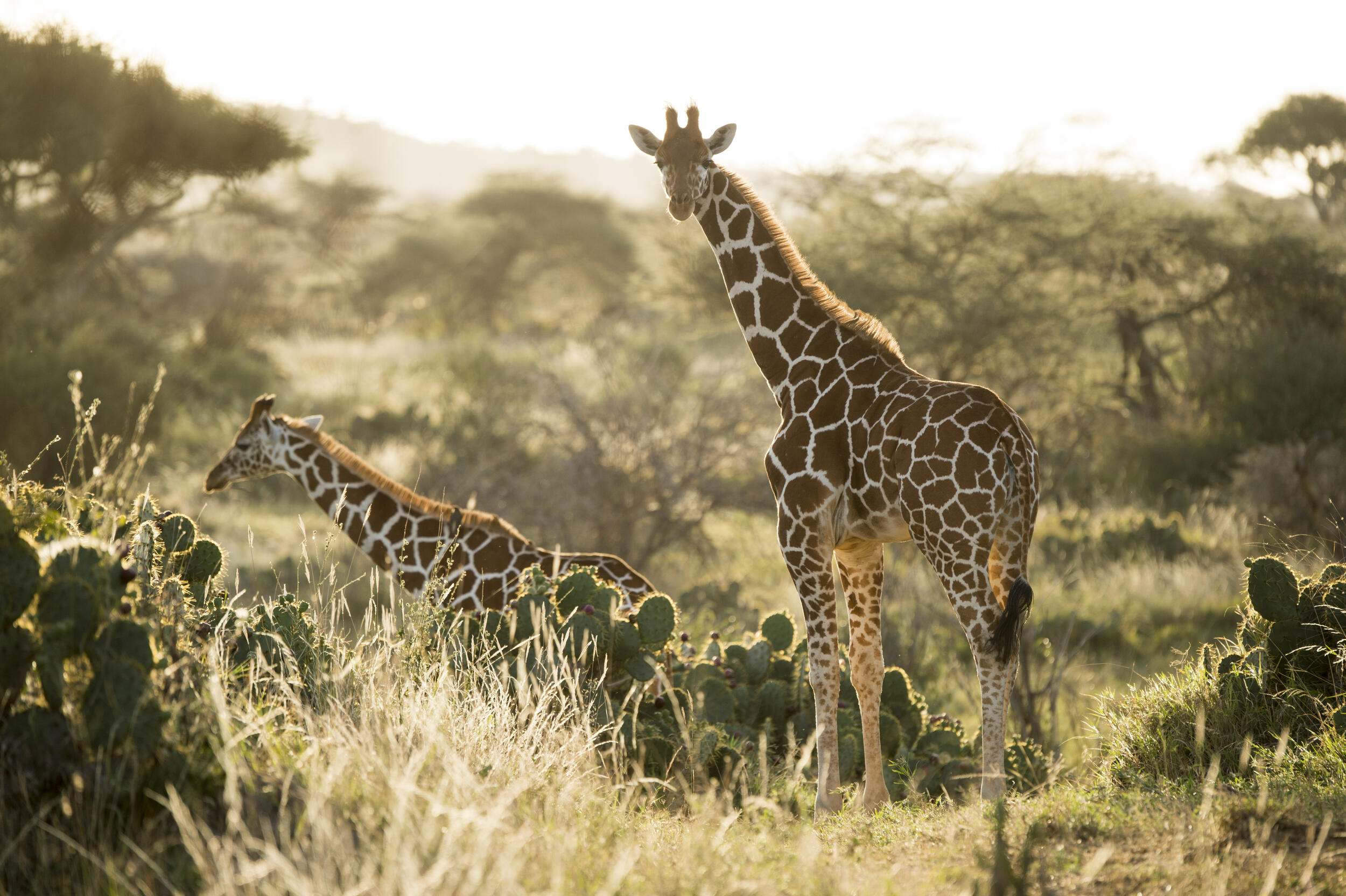
Giraffe
Many quintessential African animals, including giraffes, have multiple different species. In fact, there are four different species of giraffes, with several subspecies. TNC’s work in Kenya and Tanzania falls within the range of the Reticulated and Masai giraffes.
Reticulated giraffe populations have declined by 70% since the 1990s, largely due to habitat loss. We've partnered with researchers who are working with local communities to understand giraffe’s habitat preferences and determine what we can do to help.
Fun fact: Giraffes give birth standing up, and newborns learn to walk within just a few hours of birth!
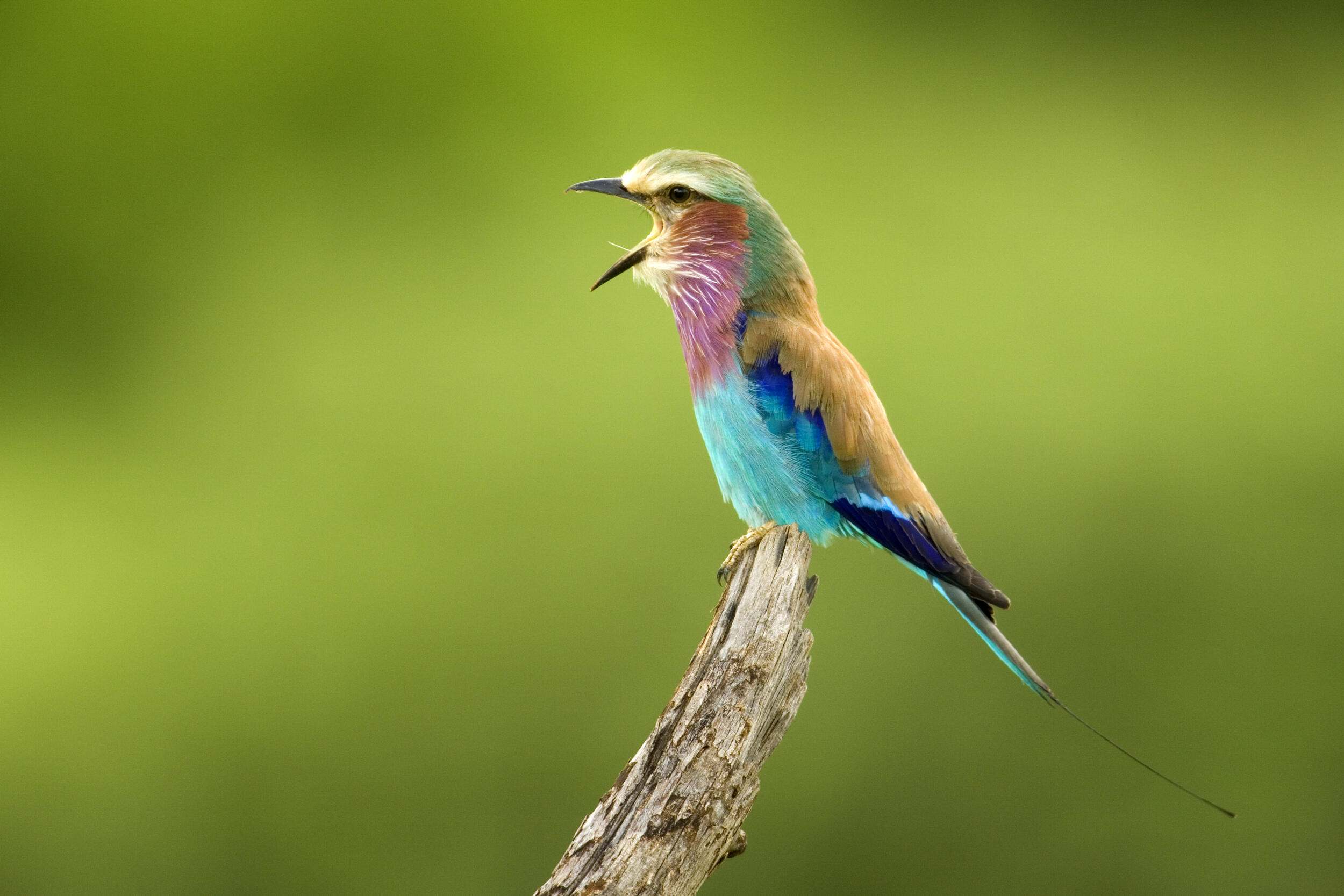
Lilac-breasted roller
The lilac-breasted roller is known for its stunning kaleidoscopic plumage and its raspy squawking call. It ranges from Somalia to South Africa and is considered the national bird of Kenya. This bird prefers open savanna habitat and builds its nest in tree cavities. The roller mates for life and the male and female birds take turns incubating their eggs. The species is not endangered and its population is stable, but it is vulnerable to habitat loss as development increases throughout its range.
Fun fact: The lilac-breasted roller gets its name from its courtship display, which involves the male bird flying high up into the air and then diving down in a rolling motion.
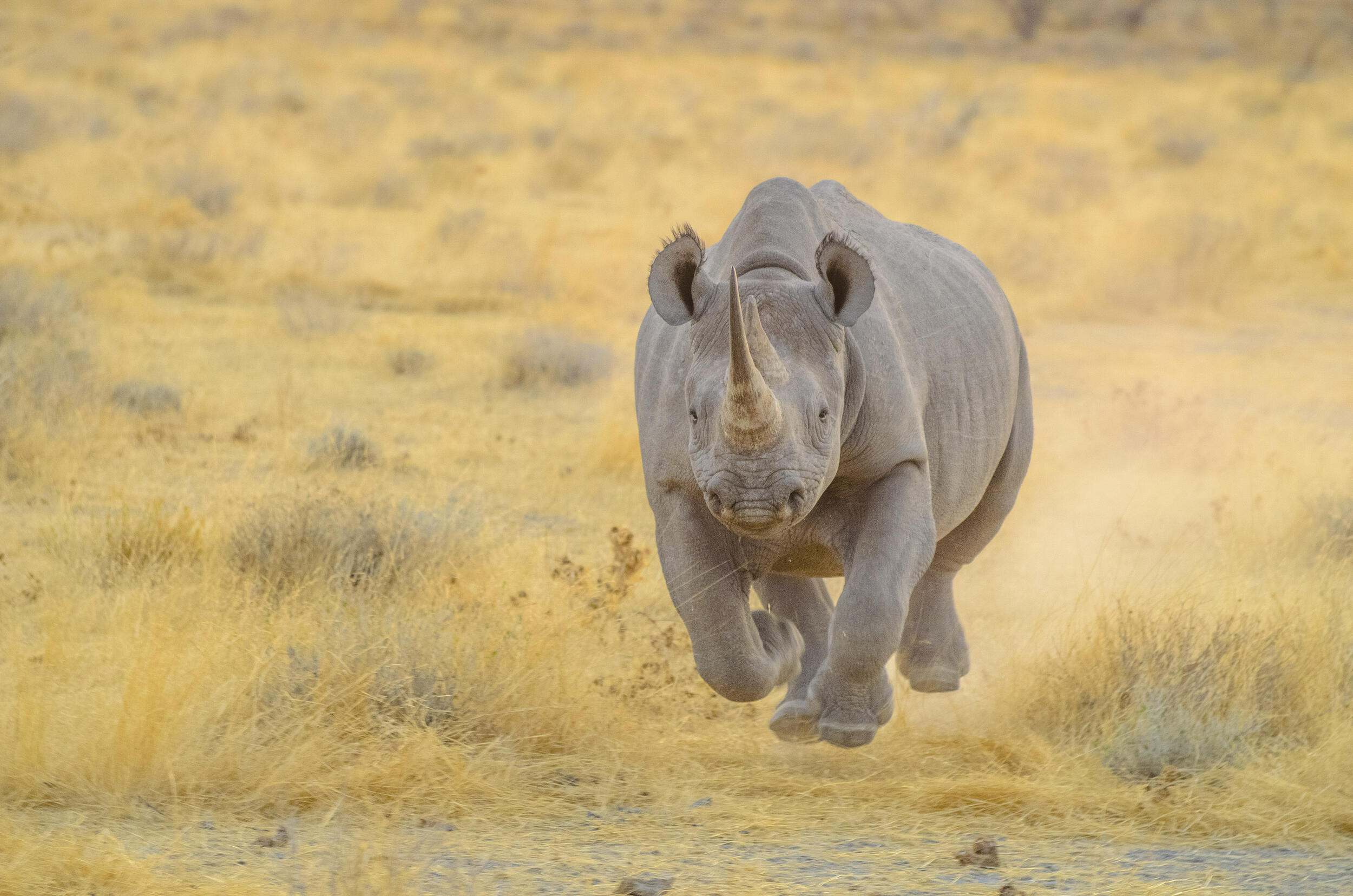
Black rhinos
Eastern black rhinos were once abundant across Kenya, but their population suffered from rampant poaching. In the mid-1980s, there were around 300 individuals left in the country. Government intervention has led to a remarkable recovery for black rhinos and a reduction in poaching, but now the rhinos’ main problem is a lack of space.
A new sanctuary at Loisaba Conservancy, funded by TNC and other partners, aims to relieve other sanctuaries that are becoming crowded with black rhinos. These animals need a lot of room to roam in solitude, otherwise they may quickly pivot from breeding to fighting. Twenty-one rhinos were recently moved to Loisaba in a mammoth relocation effort led by Kenya Wildlife Service.
Fun fact: Black rhinos can weigh up to 1,400 kilograms!
